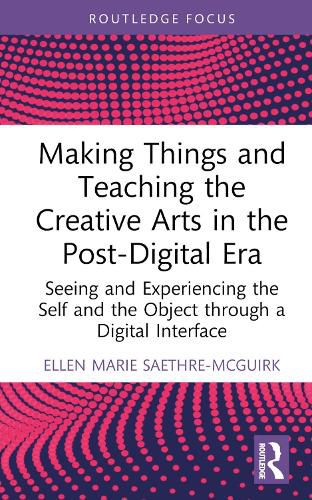Readings Newsletter
Become a Readings Member to make your shopping experience even easier.
Sign in or sign up for free!
You’re not far away from qualifying for FREE standard shipping within Australia
You’ve qualified for FREE standard shipping within Australia
The cart is loading…






This interdisciplinary book critically studies the processes of making art and creative arts education in the post-digital era.
Drawing from fields such as Philosophy and Pedagogy, it demarcates a meaningful understanding of what it is to make art and things, and to teach artmaking in this contemporary landscape. The book develops and articulates a phenomenology of aesthetic practices within the post-digital era and covers themes such as the aesthetic practices of making and the experience of an aesthetic act through a digital interface. Chapters also suggest new didactic approaches to understanding and creating form as an integral part of creative arts education in the post-digital era, and analyses creative arts pedagogy research in this light. The experience of materials and space, both real and virtual, are presented for theoretical reflection throughout the book.
This book will be of interest to scholars working in aesthetics, art, design, public art/public space, art education, digital culture, and human-computer interaction studies.
$9.00 standard shipping within Australia
FREE standard shipping within Australia for orders over $100.00
Express & International shipping calculated at checkout
This interdisciplinary book critically studies the processes of making art and creative arts education in the post-digital era.
Drawing from fields such as Philosophy and Pedagogy, it demarcates a meaningful understanding of what it is to make art and things, and to teach artmaking in this contemporary landscape. The book develops and articulates a phenomenology of aesthetic practices within the post-digital era and covers themes such as the aesthetic practices of making and the experience of an aesthetic act through a digital interface. Chapters also suggest new didactic approaches to understanding and creating form as an integral part of creative arts education in the post-digital era, and analyses creative arts pedagogy research in this light. The experience of materials and space, both real and virtual, are presented for theoretical reflection throughout the book.
This book will be of interest to scholars working in aesthetics, art, design, public art/public space, art education, digital culture, and human-computer interaction studies.